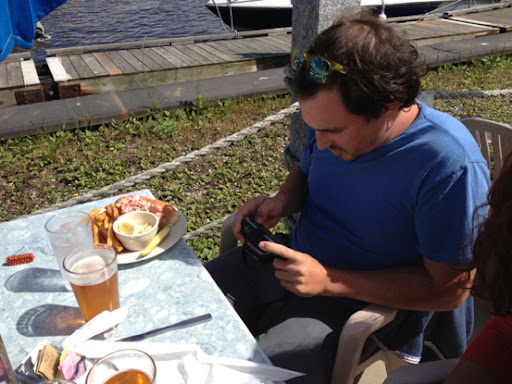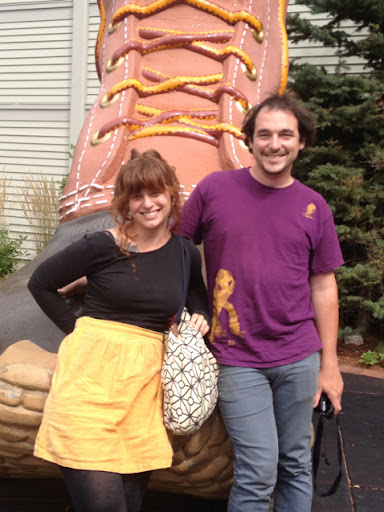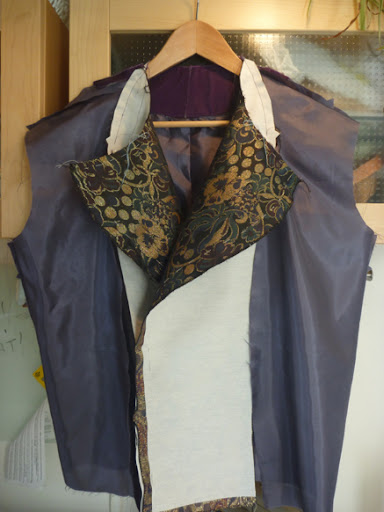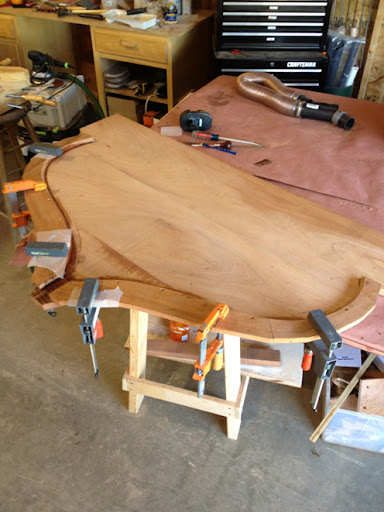
The left center front panel can be left unbottoned to create an asymetrical lapel, which is how I intend to wear it. Otherwise, all that fabulous metalic brocade is for naught! To beef up the lapel edge I've slipstitched on some 3/8" cotton twill tape. One edge is stitched to the brocade at the seamline, the other is stitched only to the interfacing. The goal is to have all the stitches invisible. I did this only on the left side. It's not difficult, and goes surprisingly quickly.
Then things start to slow down....
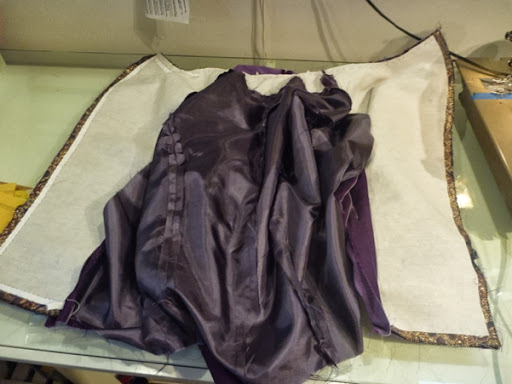
What's going on here is what I call the "big seam". OK, so there are some traditional tailors turning over in their graves right now; so be it. This is a process that's given me more professional looking results without all the collar handsewing. The facing/ lining component is aligned and basted to the jacket body. The band collar is sandwiched between the two. The two "halves" of the jacket are then stitched together in one continuous seam; think up, over, down and done! It takes awhile to set this all up. We're talking lots and lots of basting, but this is a technique that's worked well for me. In particular, it simplifies the collar. You do, however, need a machine powerful enough to go through four layers of velvet and two of interfacing.

Here is the whole mess finally ready for the sewing machine. Lots and lots of basting eliminates the need for any annoying pins. Personally, I like that, and so do my fingers!
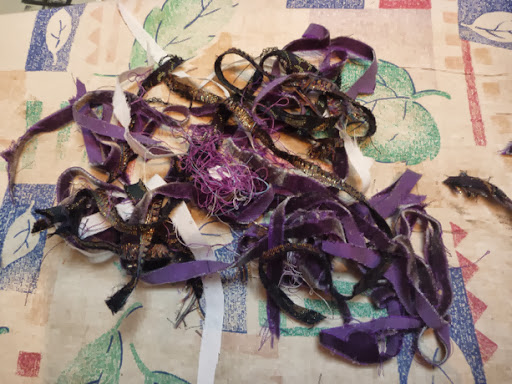
The seams will be very bulky, so I very cautiously trim away. One slip of the scissors and it's pretty much over. I frequently turn the garment rightside out and feel the seams as I go along. This guides me in where and what to trim.
A reader recently asked about the similarities between sewing and boatbuilding. Well, here you go!
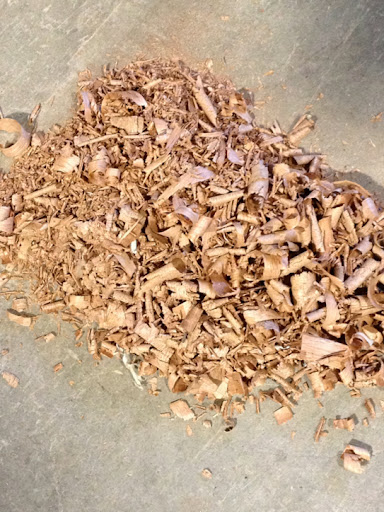
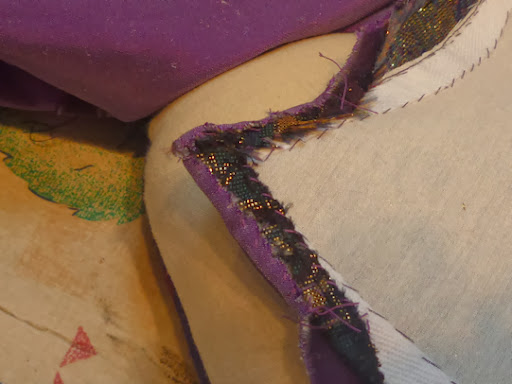
Now I go back to my buddy Cabrera. To control the fabric at the turn of the lapel point, the seam allowances are trimmed a bit and whipstitched back onto the tape. This doesn't have to be pretty (and it's not!). The remaining seams should be pressed open. This was difficult to do with my two fussy fabrics. I steamed them open as best I could before turning everything rightside out.
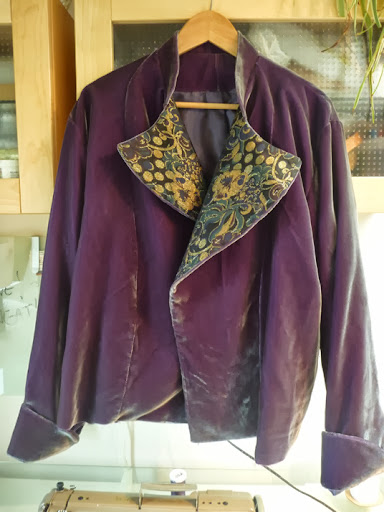
And so, here we are. Things are coming together.
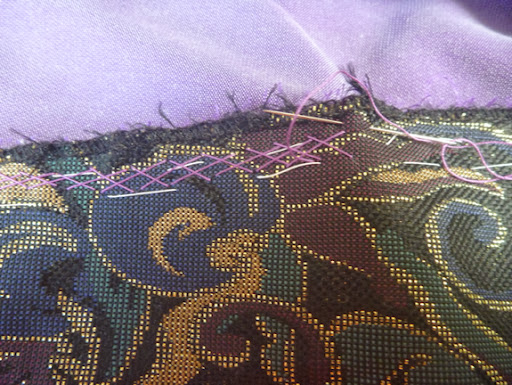
The brocade facings are still flopping around, so I cross stitched them onto the jacket seam allowance. I'm getting addicted to doing all this kind of hand sewing with silk thread. It almost never tangles. The white basting thread (which also never tangles) is holding the interfacing in place and will be removed after the cross stitching.

While I'm in a handsewing mood, I might as well hem the jacket. This is a technique I use all the time. A bias strip of muslin is sewn into the fold so that 1/2" shows above the hem.

The hem stitch is done between the muslin and the back of the velvet. This will produce an almost invisible hem from the right side of the jacket. The line of machine stitching ends up being the perfect place to attach the lining, but that will have to be another day.
